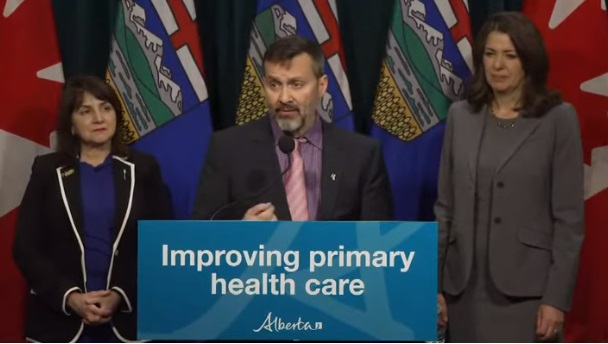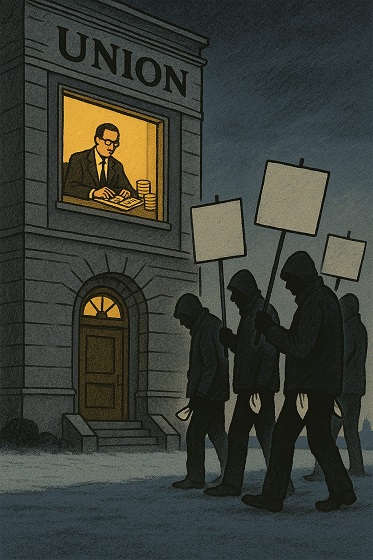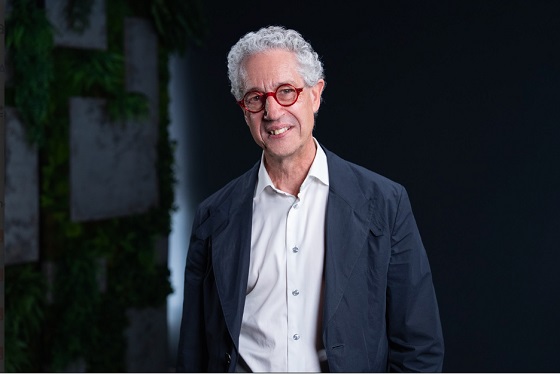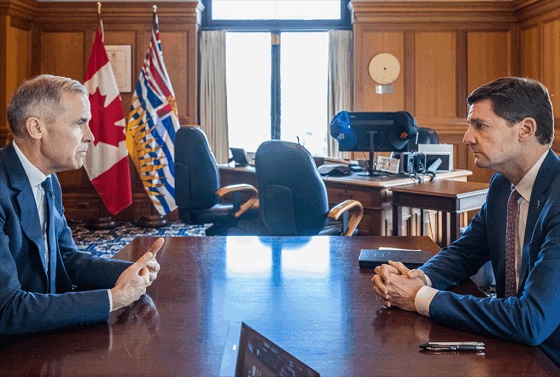Alberta
Massive funding boosts kick off Alberta’s transition to fully comprehensive care

Dr. Paul Parks, president, Alberta Medical Association
Canada signs more than $1 billion bilateral agreement with Alberta to improve health care over three years
From: Health Canada
This investment will increase access to a primary health provider, reduce wait times for mental health services, and provide greater access to health data.
Canadians want and deserve a health care system that provides timely access to health services whenever and wherever they are needed. That is why the Government of Canada is investing over $200 billion over 10 years, which includes $25 billion for tailored bilateral agreements with provinces and territories, to support the Working Together to Improve Health Care for Canadians plan.
Today, the Honourable Mark Holland, Canada’s Minister of Health, and the Honourable Adriana LaGrange, Alberta Minister of Health, announced a bilateral agreement to invest $1.06 billion over the next three years, marking a crucial step in a 10-year plan for collaboration. This includes $285 million per year in new funding by the Government of Canada and continuing $70 million per year in previously-announced mental health and substance use funding, which will help accelerate efforts already underway in Alberta to improve health care access and services.
Through this federal funding, Alberta has a three year action plan to deliver improvements to its health care system by 2026, including:
- Increasing access to primary care providers for Albertans and reducing emergency department visits that could have been addressed by a family medicine office. This will be achieved by expanding team-based care and enhancing virtual care, and increasing the number of appointments available to patients.
- Funding community providers to increase diagnostic imaging capacity in the province, reducing wait times for CT scans and MRIs.
- Improving patient care by enhancing Albertans’ ability to access digital health services and their own health information by implementing e-referral services and accelerating the secure exchange of data across the health system.
- Expanding integrated services for youth mental health services in the province through school-based and community day programs, and offering more supports for youth with complex needs as they transition into adult services.
- Reducing median wait times for community mental health and substance use services by establishing new and improving existing treatment spaces, along with prioritizing culturally appropriate Indigenous community supports.
- Ensuring that First Nations and Métis people have access to high-quality, culturally safe care that meets their unique health needs. This will be achieved through dedicated funding for initiatives to enhance access to primary care in Indigenous communities, and funding for communities to develop health workforce capacity and infrastructure to improve the collection and use of health information and data.
- Improving access to health care for underserved Albertans, including through expanded community pilots that bring testing services to rural, remote and Indigenous communities, advancing French-language health services, and greater clinical care for women.
Progress on these initiatives and broader commitments will be measured against targets which Alberta will publicly report on annually.
Through this new agreement, Alberta will improve how health information is collected, shared, used and reported to Canadians; streamline foreign credential recognition for internationally educated health professionals; facilitate the mobility of key health professionals within Canada; and fulfill shared responsibilities to uphold the Canada Health Act to protect Canadians’ access to health care that is based on need, not the ability to pay.
Recognizing the significant disparities in Indigenous health outcomes, the Government of Canada and the Government of Alberta also commit to meaningfully engage and work together with Indigenous partners to support improved access to quality and culturally appropriate health care services. Alberta’s action plan is informed by continued engagement with its Indigenous partners and recent discussions involving the federal government. All orders of government will approach health decisions in their respective jurisdictions through a lens that promotes respect and reconciliation with Indigenous Peoples.
Alberta and the federal government will continue working together to improve access to health services and deliver tangible results to all residents across the province, including responding to the needs of Indigenous and other underserved and disadvantaged populations.
Quotes
“Our government is working together with provinces and territories to get Canadians the healthcare they need. This agreement is an important step in our collaboration with Alberta to take measurable actions to transform our health care system. The funding will help improve access to primary care and create better mental health services in Alberta. Together, we will continue working to achieve better health outcomes for all Canadians.”
The Honourable Mark Holland
Minister of Health of Canada
“Mental health is health, and through this agreement, we will be working with Alberta to integrate mental health and substance use care as a full and equal part of our universal health care system. This agreement will strengthen the capacity of family health providers, reduce substance use harms, and expand virtual care for youth to improve access to quality and timely mental health care and substance use supports. Together, we must ensure that all Canadians have access to supports and services for their mental health and well-being – when they need them, wherever they need them.”
The Honourable Ya’ara Saks
Minister of Mental Health and Addictions and Associate Minister of Health of Canada
“Alberta’s government is taking a serious look at the way health care is being delivered in our province. This is why we are refocusing our health care system to ensure Albertans have access to timely care, when and where they need it. This initial funding from the federal government is a good start and will support our shared health priorities of expanding access to primary care across the province and especially in our Indigenous communities, supporting our health care workers, improving access to quality mental health, and modernizing our health systems.”
The Honourable Adriana LaGrange
Minister of Health of Alberta
“Alberta’s government is supporting Albertans to improve their mental health and recover from the deadly disease of addiction as we build out the Alberta Recovery Model and refocus our provincial healthcare system. We are doing this by increasing access to CASA Mental Health Classrooms across the province, building more bed based mental health treatment capacity for youth, and improving access to mental health and addiction treatment services in communities. This initial funding from the federal government will offer some support to these made in Alberta initiatives as we build a better system of mental health and addiction care for Albertans.”
The Honourable Dan Williams
Minister of Mental Health and Addiction of Alberta
Quick facts
- The Working Together investment includes $25 billion for tailored bilateral agreements with provinces and territories, a guaranteed 5% Canada Health Transfer (CHT) increase for the next five years—amounting to $17.5 billion—and a one time CHT $2 billion top-up to address urgent needs of emergency rooms and paediatric hospitals delivered in June 2023. Combined, these investments provide provinces and territories the flexibility to address the unique needs of their populations and geography, and accelerate health care system improvements.
- Budget 2023 outlined the Government of Canada’s plan to invest over $200 billion over 10 years, including $46.2 billion in new funding for provinces and territories, to improve health care for Canadians. Within this funding, $25 billion is allocated through tailored bilateral agreements to address the unique needs of their populations and geography in four shared health priorities:
- expanding access to family health services, including in rural and remote areas;
- supporting health workers and reducing backlogs;
- increasing mental health and substance use support; and
- modernizing health care systems with health data and digital tools.
- All provinces and territories are already making considerable investments to advance progress in all four of these priority areas, and the new federal funding is complementing and expanding those efforts.
- As part of these bilateral agreements, provinces and territories are developing action plans that outline how funds will be spent and how progress will be measured to demonstrate to Canadians that improvements are occurring in Canada’s health care system. Alberta’s initial 3-year Action Plan can be found here.
- Budget 2017 committed $11 billion over 10 years in federal funding to provinces and territories to improve access to home and community care, and mental health and addictions services for Canadians. Bilateral agreements were signed with provinces and territories to access the first six years of funding. The final four years of funding for mental health and addictions are included in the new Working Together bilateral agreements.
- The Government is also working with provinces and territories to implement a second bilateral agreement focused on helping Canadians age with dignity close to home, with access to home care or care in a safe long-term care facility. This agreement will include the remaining $2.4 billion over four years to improve access to home and community care from Budget 2017; and the $3 billion over five years for long-term care from Budget 2021 to apply standards of care in long-term care facilities and help support workforce stability.
———-
From the Province of Alberta
This funding will be an essential transitional step to ensure doctors can continue to provide this care as we rapidly transition to a funding model that supports fully comprehensive care.”
Dr. Paul Parks, president, Alberta Medical Association
New funding to stabilize primary health careStabilization funding is coming soon as Alberta’s government continues working to improve primary health care across the province. The government is pulling out all the stops to stabilize, strengthen and improve Alberta’s primary health care system. Additional funding of $200 million over two years will improve access to family physicians and help ensure primary health care is available for every Albertan when and where they need it. This funding is enabled through the new Canada-Alberta Health Funding Agreement with the federal government. The agreement represents a total of approximately $1.1 billion in additional health care funding over three years for shared priorities.
Stabilization funding is an important transitional measure identified through work under the memorandum of understanding (MOU) between the minister of health and the Alberta Medical Association (AMA), signed earlier this fall. The AMA has been advocating for family physicians and rural generalists through its work under the MOU. Alberta’s government will continue to engage with the AMA as it works to develop a new, sustainable physician comprehensive care model, which will also dictate how this additional funding will be distributed. In addition to work between the government and the AMA, the Comprehensive Care Task Force will, in the new year, provide a first draft of recommendations that will include additional short-term stabilization actions to help family doctors continue to practise comprehensive care and bridge the gap until a new physician comprehensive care model is developed. These short-term actions will:
Alberta’s government is committed to finalizing a sustainable physician comprehensive care model that will address the concerns of family physicians and rural generalists and ensure Albertans can access the care they need.
Other recently announced supports for primary health care include:
Related information |
Alberta
‘Weird and wonderful’ wells are boosting oil production in Alberta and Saskatchewan

From the Canadian Energy Centre
Multilateral designs lift more energy with a smaller environmental footprint
A “weird and wonderful” drilling innovation in Alberta is helping producers tap more oil and gas at lower cost and with less environmental impact.
With names like fishbone, fan, comb-over and stingray, “multilateral” wells turn a single wellbore from the surface into multiple horizontal legs underground.
“They do look spectacular, and they are making quite a bit of money for small companies, so there’s a lot of interest from investors,” said Calin Dragoie, vice-president of geoscience with Calgary-based Chinook Consulting Services.
Dragoie, who has extensively studied the use of multilateral wells, said the technology takes horizontal drilling — which itself revolutionized oil and gas production — to the next level.
“It’s something that was not invented in Canada, but was perfected here. And it’s something that I think in the next few years will be exported as a technology to other parts of the world,” he said.
Dragoie’s research found that in 2015 less than 10 per cent of metres drilled in Western Canada came from multilateral wells. By last year, that share had climbed to nearly 60 per cent.
Royalty incentives in Alberta have accelerated the trend, and Saskatchewan has introduced similar policy.
Multilaterals first emerged alongside horizontal drilling in the late 1990s and early 2000s, Dragoie said. But today’s multilaterals are longer, more complex and more productive.
The main play is in Alberta’s Marten Hills region, where producers are using multilaterals to produce shallow heavy oil.
Today’s average multilateral has about 7.5 horizontal legs from a single surface location, up from four or six just a few years ago, Dragoie said.
One record-setting well in Alberta drilled by Tamarack Valley Energy in 2023 features 11 legs stretching two miles each, for a total subsurface reach of 33 kilometres — the longest well in Canada.
By accessing large volumes of oil and gas from a single surface pad, multilaterals reduce land impact by a factor of five to ten compared to conventional wells, he said.
The designs save money by skipping casing strings and cement in each leg, and production is amplified as a result of increased reservoir contact.
Here are examples of multilateral well design. Images courtesy Chinook Consulting Services.
Parallel
Fishbone
Fan
Waffle
Stingray
Frankenwells
Alberta
Alberta to protect three pro-family laws by invoking notwithstanding clause

From LifeSiteNews
Premier Danielle Smith said her government will use a constitutional tool to defend a ban on transgender surgery for minors and stopping men from competing in women’s sports.
Alberta Premier Danielle Smith said her government will use a rare constitutional tool, the notwithstanding clause, to ensure three bills passed this year — a ban on transgender surgery for minors, stopping men from competing in women’s sports, and protecting kids from extreme aspects of the LGBT agenda — stand and remain law after legal attacks from extremist activists.
Smith’s United Conservative Party (UCP) government stated that it will utilize a new law, Bill 9, to ensure that laws passed last year remain in effect.
“Children deserve the opportunity to grow into adulthood before making life-altering decisions about their gender and fertility,” Smith said in a press release sent to LifeSiteNews and other media outlets yesterday.
“By invoking the notwithstanding clause, we’re ensuring that laws safeguarding children’s health, education and safety cannot be undone – and that parents are fully involved in the major decisions affecting their children’s lives. That is what Albertans expect, and that is what this government will unapologetically defend.”
Alberta Justice Minister and Attorney General Mickey Amery said that the laws passed last year are what Albertans voted for in the last election.
“These laws reflect an overwhelming majority of Albertans, and it is our responsibility to ensure that they will not be overturned or further delayed by activists in the courts,” he noted.
“The notwithstanding clause reinforces democratic accountability by keeping decisions in the hands of those elected by Albertans. By invoking it, we are providing certainty that these protections will remain in place and that families can move forward with clarity and confidence.”
The Smith government said the notwithstanding clause will apply to the following pieces of legislation:
-
Bill 26, the Health Statutes Amendment Act, 2024, prohibits both gender reassignment surgery for children under 18 and the provision of puberty blockers and hormone treatments for the purpose of gender reassignment to children under 16.
-
Bill 27, the Education Amendment Act, 2024, requires schools to obtain parental consent when a student under 16 years of age wishes to change his or her name or pronouns for reasons related to the student’s gender identity, and requires parental opt-in consent to teaching on gender identity, sexual orientation or human sexuality.
-
Bill 29, the Fairness and Safety in Sport Act, requires the governing bodies of amateur competitive sports in Alberta to implement policies that limit participation in women’s and girls’ sports to those who were born female.”
Bill 26 was passed in December of 2024, and it amends the Health Act to “prohibit regulated health professionals from performing sex reassignment surgeries on minors.”
As reported by LifeSiteNews, pro-LGBT activist groups, with the support of Alberta’s opposition New Democratic Party (NDP), have tried to stop the bill via lawsuits. It prompted the Smith government to appeal a court injunction earlier this year blocking the province’s ban on transgender surgeries and drugs for gender-confused minors.
Last year, Smith’s government also passed Bill 27, a law banning schools from hiding a child’s pronoun changes at school that will help protect kids from the extreme aspects of the LGBT agenda.
Bill 27 will also empower the education minister to, in effect, stop the spread of extreme forms of pro-LGBT ideology or anything else to be allowed to be taught in schools via third parties.
Bill 29, which became law last December, bans gender-confused men from competing in women’s sports, the first legislation of its kind in Canada. The law applies to all school boards, universities, and provincial sports organizations.
Alberta’s notwithstanding clause is like all other provinces’ clauses and was a condition Alberta agreed to before it signed onto the nation’s 1982 constitution.
It is meant as a check to balance power between the court system and the government elected by the people. Once it is used, as passed in the legislature, a court cannot rule that the “legislation which the notwithstanding clause applies to be struck down based on the Charter of Rights and Freedoms, the Alberta Bill of Rights, or the Alberta Human Rights Act,” the Alberta government noted.
While Smith has done well on some points, she has still been relatively soft on social issues of importance to conservatives , such as abortion, and has publicly expressed pro-LGBT views, telling Jordan Peterson earlier this year that conservatives must embrace homosexual “couples” as “nuclear families.”
-

 Business2 days ago
Business2 days agoCanada is failing dismally at our climate goals. We’re also ruining our economy.
-

 Alberta2 days ago
Alberta2 days agoAlberta to protect three pro-family laws by invoking notwithstanding clause
-

 Health1 day ago
Health1 day agoCDC’s Autism Reversal: Inside the Collapse of a 25‑Year Public Health Narrative
-

 Health1 day ago
Health1 day agoBREAKING: CDC quietly rewrites its vaccine–autism guidance
-

 Crime1 day ago
Crime1 day agoCocaine, Manhunts, and Murder: Canadian Cartel Kingpin Prosecuted In US
-

 Daily Caller1 day ago
Daily Caller1 day agoBREAKING: Globalist Climate Conference Bursts Into Flames
-

 Alberta2 days ago
Alberta2 days ago‘Weird and wonderful’ wells are boosting oil production in Alberta and Saskatchewan
-

 Energy1 day ago
Energy1 day agoHere’s what they don’t tell you about BC’s tanker ban
















